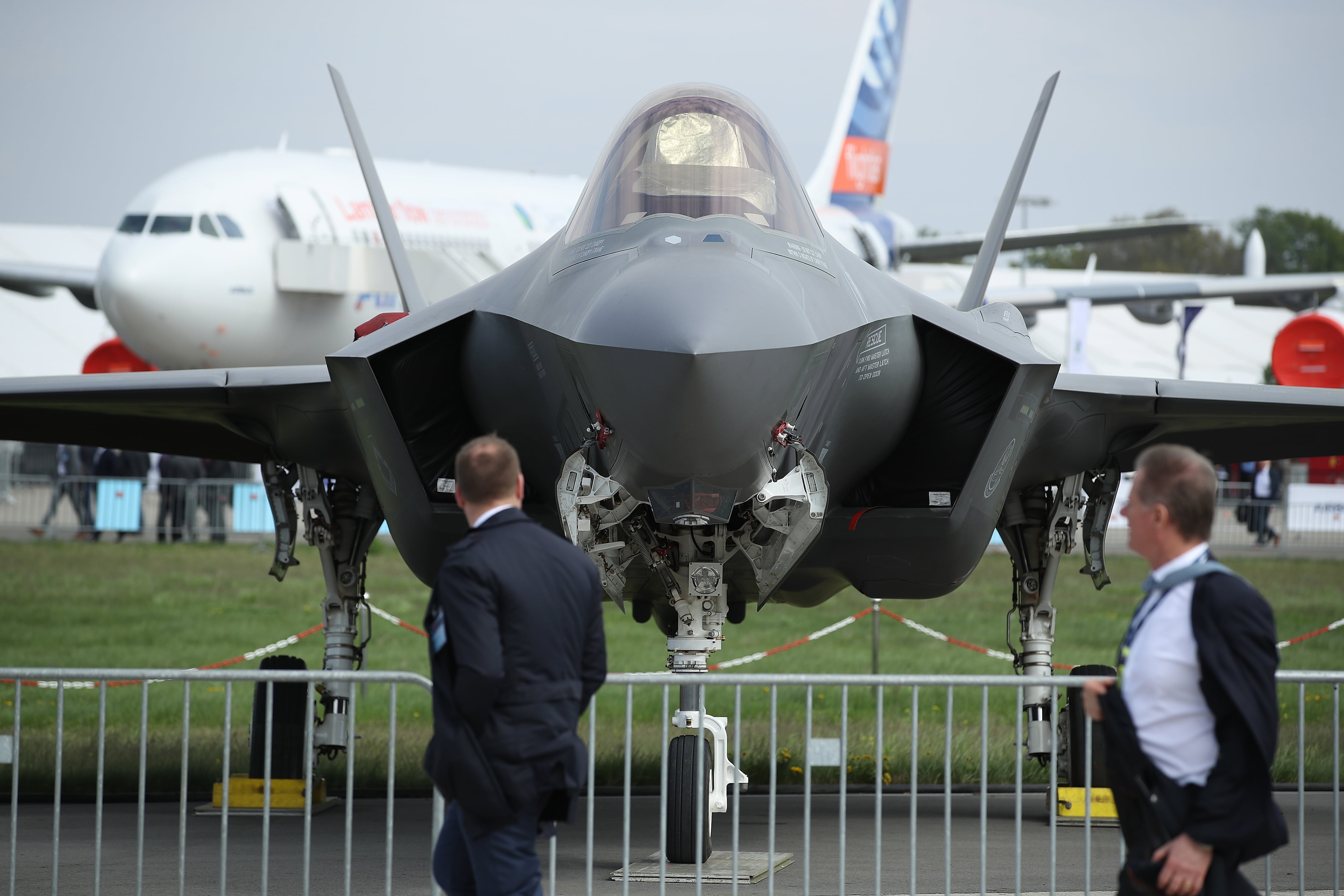WASHINGTON — The German air force will reportedly buy up to 90 Eurofighters, 30 F/A-18E/F Super Hornets and 15 EA-18G Growlers to replace the remainder of its Panavia Tornado fighter jet fleet, but the split procurement doesn’t offer an easy answer for Germany’s requirement to field a nuclear-capable jet, a U.K. defense think tank said.
Germany plans to use the Super Hornet, made by U.S. aerospace company Boeing, to fill a NATO requirement to field fighter aircraft capable of dropping the B61 nuclear gravity bomb, according to German business publication Handelsblatt, which first reported the split buy. It will also buy Growlers to replace the Tornados that carry out an electronic attack role.
RELATED

However, only the legacy F/A-18 Hornet — not the Super Hornet — was ever certified to carry the B61, wrote Justin Bronk, a research fellow with the Royal United Services Institute, a U.K. based thinktank that covers defense issues. That means that the Super Hornet will have to go through the certification process, said Bronk, who called the split buy “the worst of all previously mooted outcomes.”
Boeing spokesman Justin Gibbons said that while the Super Hornet is not yet certified to carry the B61, the company has the U.S. government’s support for future integration.
“The F/A-18 Super Hornet is capable of being certified to meet B61 requirements for Germany under its timeline. Boeing has a proven track record of successfully integrating weapons systems that meet the needs of both U.S. and international customers,” he said. Gibbons declined to comment on the timing of Germany’s deadline for competitive reasons.
Germany has agonized over replacing the Tornado for years, and both political and industrial factors have helped sway the government’s stance on its next tranche of fighters. In 2017, Lt. Gen. Karl Muellner, then the country’s air force chief, expressed a preference for Lockheed Martin’s F-35, but he was later fired reportedly for his outspoken support for the U.S. jet and Germany officially knocked the F-35 out of the competition last year.
This left the race down to either the Eurofighter Typhoon, which is made by a consortium led by Germany’s Airbus, Italy’s Leonardo and the U.K.’s BAE Systems, or Boeing’s F/A-18E/F Super Hornet. The Typhoon received strong political support, with Airbus making the case that another batch of Eurofighters for Germany could help the European defense industry bridge the gap between the Typhoon and the sixth-generation Future Combat Air System.
Historically, Germany has kept a portion of its Tornado fleet configured to use U.S. nuclear bombs as part of a NATO nuclear-sharing agreement. In the case of a major war with Russia, German pilots would be able to load their jets with nuclear weapons, take off and drop them on behalf of NATO.
In late 2019, reports indicated that the pendulum was swinging toward a German buy of Super Hornets based on information from the U.S. government stating it would take three to five years longer to certify the Eurofighter for nuclear missions.
Bronk noted that while the Eurofighter offers greater power, lift and agility compared to the Super Hornet, it could be more politically difficult and time-consuming to certify the Typhoon as the Eurofighter consortium would have to hand over some technical details over the to the U.S. government and U.S. defense contractors to integrate it with the B61.
However, “neither Eurofighter nor Super Hornet are a credible delivery system for the B61 against Russian targets due to the vulnerability of both platforms to modern Russian air defenses,” he wrote.
The F-35 is not yet capable of carrying the B61, but integrating the joint strike fighter with the bomb is planned as part of the jet’s ongoing Block 4 modernization phase. However, Bronk said buying the F-35 represented the best chance to fielding an nuclear capable jet on a fast timeline.
“If the DCA [dual capable aircraft] role is considered to require actual operational credibility from Germany, then the only feasible choice is the F-35A. Of all the potential aircraft on offer, the F-35A is the only one which represents an operationally credible B61 Mod 12 delivery solution. It will also be operated by all other European DCA members, offering shared training and maintenance burdens,” he said.
Valerie Insinna is Defense News' air warfare reporter. She previously worked the Navy/congressional beats for Defense Daily, which followed almost three years as a staff writer for National Defense Magazine. Prior to that, she worked as an editorial assistant for the Tokyo Shimbun’s Washington bureau.








